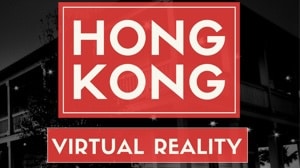The new breakthrough in technology transforms how people interact and how most companies develop. One of the most significant impacts Virtual Reality (VR) and Augmented Reality (AR) has the new dynamics it created for e-commerce, especially for retailers. Here are some of the notable transformations VR and AR can have on e-commerce.
Convenience and Time Efficient Method
A notable impact VR and AR has on e-commerce is the convenience it brings to consumers, as well as companies. Moreover, it significantly cuts down the time needed and allows more people to accomplish several things. Comfort and efficiency are one of the critical factors considered in the retail industry. Traditionally, people would come to physical stores to perform their errand or visit a website. Today, the dynamics have changed, and e-commerce is now capable of the following:
- Retailers can create a virtual showroom, showcasing their products. Rather than visiting a physical store or website, virtual showroom excites and intrigues more people. Moreover, it allows customers to explore and visit different showrooms in the comfort of their homes. One significant impact this development will have on a business engaged in e-commerce is their ability to create better landscapes than their competitors.
- Similar to retailers, grocery shopping can be made accessible. There are several emerging technologies which have adopted a VR system.
- Home developers can now entertain potential clients by showing them a virtual landscape of their projects. Using this kind of technology allows their customers to witness first hand their capabilities. Moreover, for home improvement ideas, AR and VR can help both the home developers and customers create a visualization of the results they want.
Consumer Cost Saving Measures
Besides cutting down on time and creating more convenience, AR and VR are also capable of cutting down customer costs when people can visualize the product they want. You may have heard of the saying “try before you buy,” perhaps it may even have come from you. Many consumers would rather know that their purchases are right match to what they need, instead of discovering it only after they’ve bought the product.
While you’re standing in your living room, or anywhere for that matter, you can just put on your AR headset and look through a businesses’ catalog. From there, you can check out whether the item you want fits with your space and if it’s what you want. It allows consumers more opportunity actually to visualize what they need.
VR and AR provide better dynamics between the consumers and business alike. Instead of reading through product descriptions and dimensions, customers can now actually see what they want, in the space they want it to be. It provides everyone a better understanding of what they need. Plus the size of this development is that it will force most businesses to innovate and adapt the way they present themselves to people.
Incomparable Virtual Experience
Perhaps one of the most significant development e-commerce bring is the ability of both the customers and businesses to create a medium of technology. E-commerce businesses will be challenged to create an immersive experience, capable of simulating real life. VR and AR have been recognized for their developments in gaming, but the same technology is applied to virtual stores. Through this new type of technology, customers can have a truly immersive experience while
Many e-commerce is slowly trying to integrate the technology with their businesses. Perhaps one of the biggest influences is the knowledge that more people are willing to shop online if they could also try the product virtually. Technology is not far behind, and many have tried and tested if it’s possible. Technology deems that it is possible, and it slowly challenged many to look at how the retail industry can be.
Educate and Inform More Customers
For any business, getting your product out there is essential. Selling their products is as important as letting know what the outcome is about and how they can engage the people. VR isn’t just about helping customers; it’s also about engaging customers in a new form of marketing or advertising scheme. Several companies, even small startups, have engaged its customers through the creation of virtual experience
VR and AR is a good buzz generator for most e-commerce platforms because the idea is still new to some people. In fact, not a lot of e-commerce have adopted AR and VR. But while the technology is still new, most businesses can easily lure people with their products if they utilize new technology.
Letting the Old Meet the New
Some retailers may not be as willing as others to adopt an entirely virtual and augmented experience. Some companies are more comfortable with having a brick and mortar stores, and some people are more interested in going to physical stores than online ones. These brick and mortar stores aren’t entirely out of reach from technology. In fact, augmented reality can play a significant contribution to these stores. Instead of trying out the product, especially for retail, consumers can just stand in front of a mirror to try out the things they want. This is very convenient and very interactive.
Another notable improvement of this new reality is the integration of old business systems with new ones. As has been earlier stated, most e-commerce will be challenged to develop and adapt to the current times. It would be exciting to see what else new technology can do for the future.
Reference
https://www.toptal.com/insights/innovation/3-ways-virtual-reality-transforms-ecommerce

